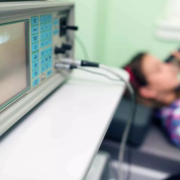Online Trading Fraud: Kerala doctor duped of Rs 3.42 crore

Thiruvananthapuram: In yet another case of cyber fraud reported from the city, a 53-year-old doctor became a victim of an online trading and investment scam leading to a loss of Rs 3.42 crore following which the cyber police registered a case.
According to the police, the sophisticated scheme is believed to have been masterminded by a gang of ten individuals who deceived the doctor into believing that he could attain immense wealth, just like the others he encountered within the fraudulent organization.
Also read- FedEx Courier Scam: Delhi Doctor Loses Rs 5 Lakh To Fraudsters
As per the TOI news report, the incident occurred when the doctor was contacted by an individual posing as a member of a leading firm’s share trading research team, promoting the potential of online trading.
Subsequently, he was invited to join a WhatsApp group where fake profiles of purported billionaires in online trading were presented. The doctor, unaware of the deception, was lured by promises of attractive profits from small investments.
To win the trust of the doctor, the accused began giving him profits in small investments. This prompted the doctor to invest more and gain more profit. However, things took a turn when the accused asked the doctor to download an application purportedly for trading purposes.
But in reality, the app allowed the accused to access his personal information and banking credentials. With this access, they were able to transfer a substantial amount from his bank account.
Upon realising that he had fallen into a trap, the doctor approached the cyber police and registered a case under relevant sections of the Information Technology Act and the Indian Penal Code (IPC), including sections 66(D) for cyber fraud, 419 for cheating by personation, and 420 for cheating.
Speaking to the Daily, an officer of the cyber police department said, “We have been collecting all the available details from the victim and measures have been taken to block the accounts to which the snatched money was transferred.”
Also read- Pune Doctor Duped By Fraudsters In Drug Parcel Scam, Loses Rs 1 Crore
Powered by WPeMatico



















